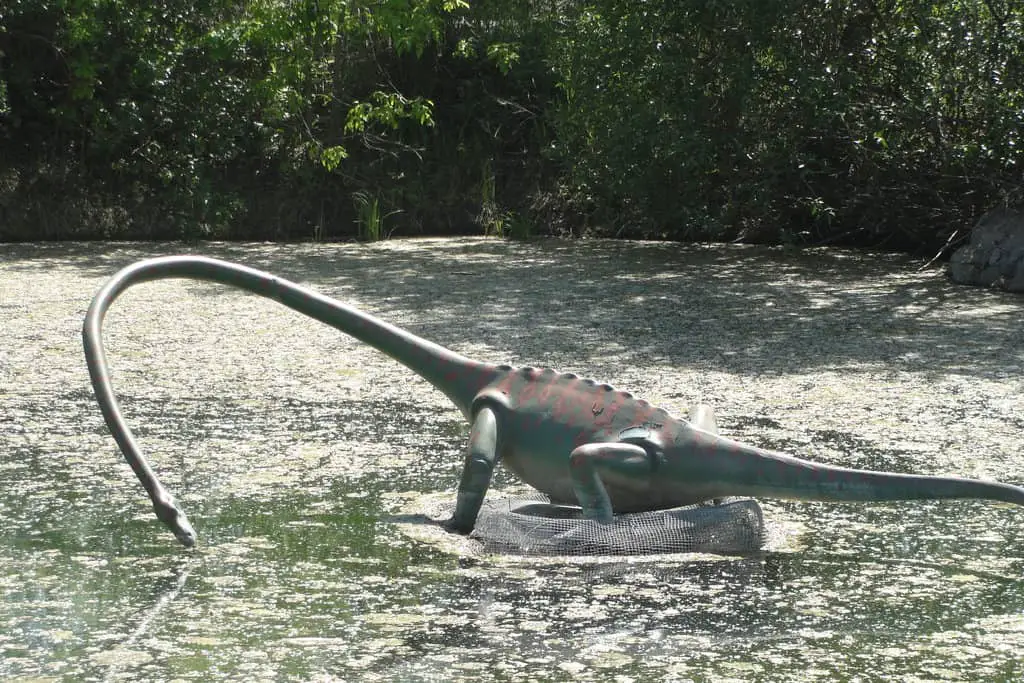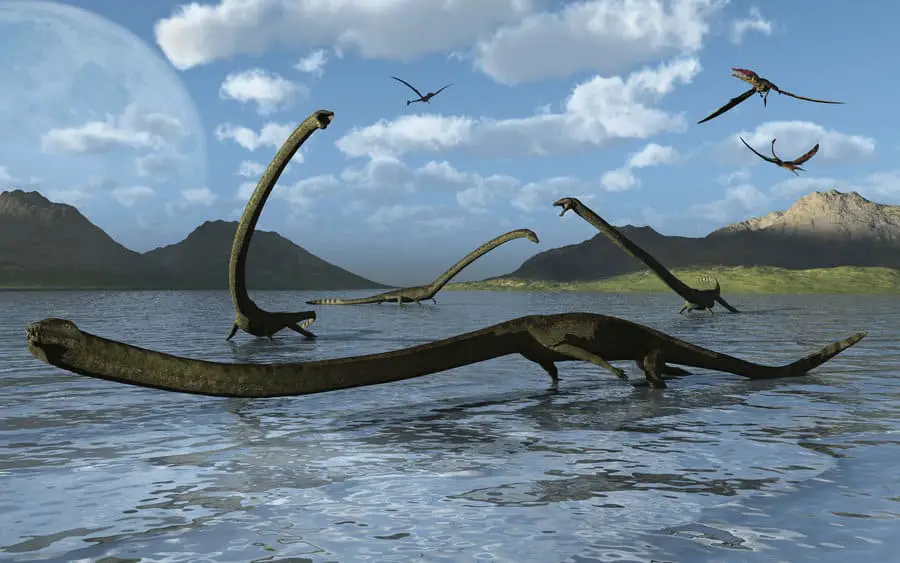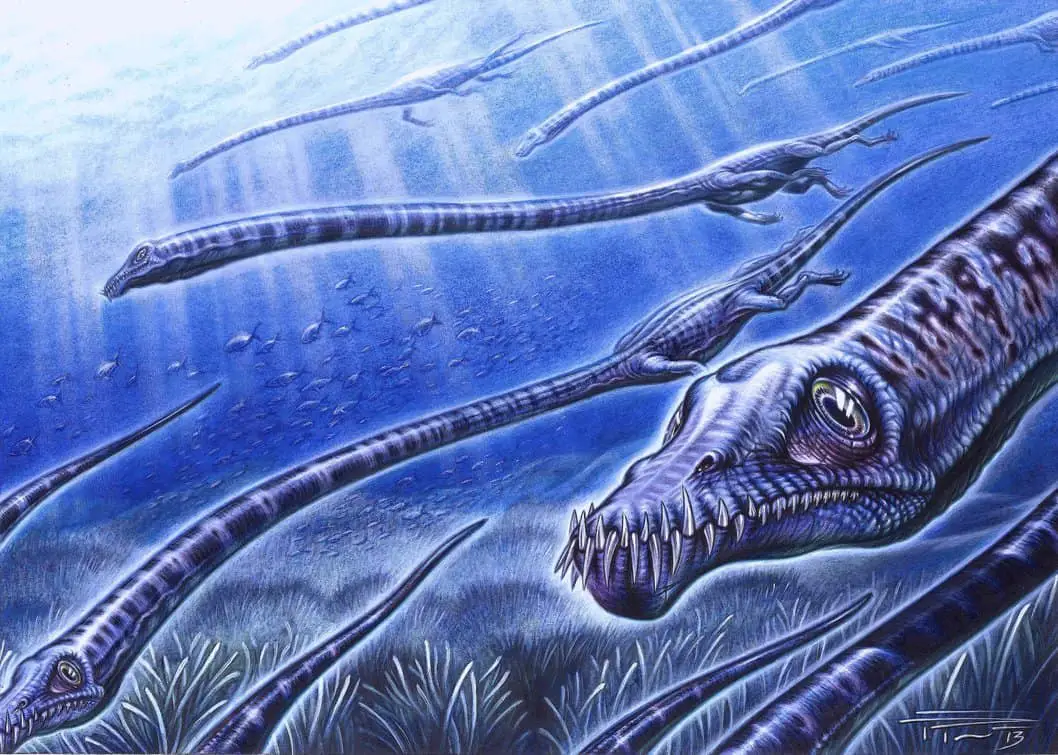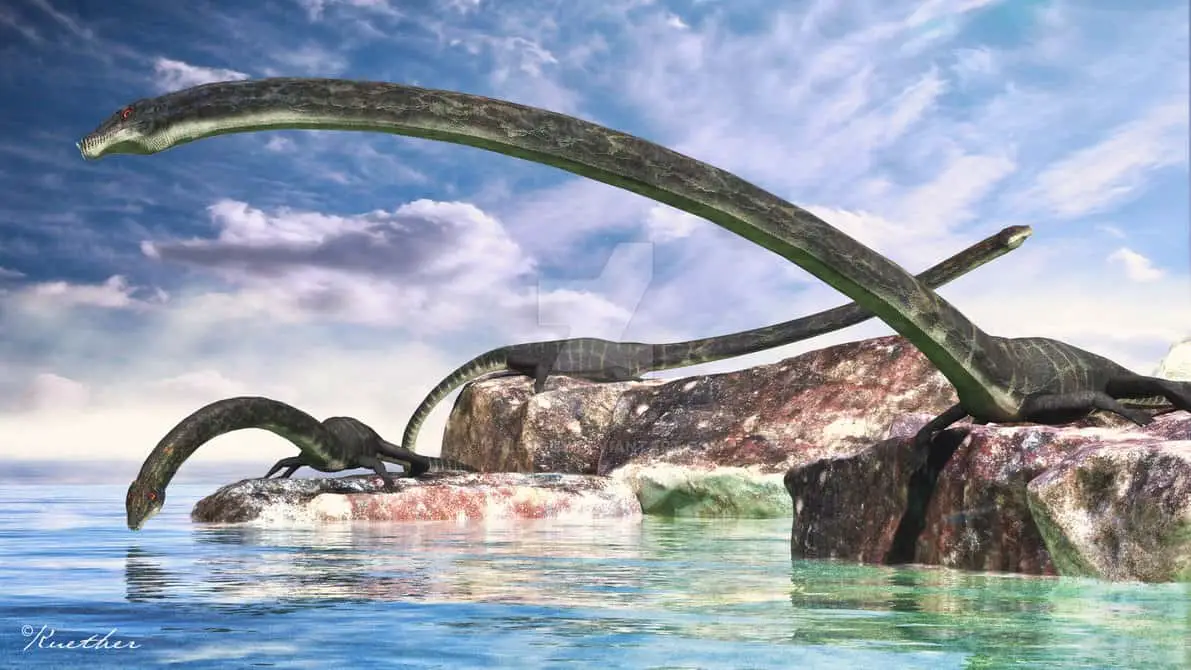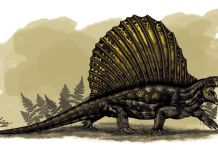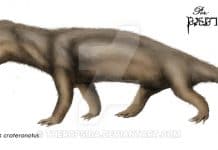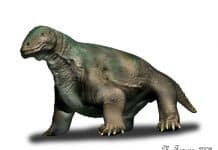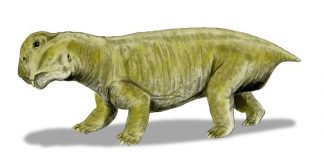Quick Tanystropheus Facts
- Lived during the Late Triassic Period
- Lived in what is now Europe
- Its neck was half its length
- Was as long as a Green Anaconda
- Weighed almost as much as Panda Bear
- Was a Piscivore
About Tanystropheus
Tanystropheus is an extinct reptile which lived approximately 215 million years ago during the Late Triassic Period. It was first discovered during the 19th century by Francesco Bassani. In 1886, he gave it its name – a name which means “long necked one.”
One of the most interesting facts about Tanystropheus is that when Francesco Bassani first discovered it, he thought that it was a pterosaur. He didn’t discover the mistake until much later when he discovered that it was actually an archosaur.
If you saw Tanystropheus pictures and didn’t know it had been a real animal, then you probably would think that the artist made some sort of mistake or that it was something drawn for a cartoon. After all, this animal is depicted with a neck that is half its total length. However, that wouldn’t be the case. These reptiles really did have unusually long necks.
Ever since it was discovered, Tanystropheus has fascinated paleontologists. They often question why its neck was so long or why it only had ten elongated vertebrae instead of having a neck with a lot of little vertebrae like a sauropod. All of these are questions that paleontologists are going to have to figure out in the future when more evidence becomes available.
Tanystropheus was approximately 20 feet long – with 10 feet of that length being its neck – and it weighed around 300 pounds. Paleontologists believe that this web-toed reptile probably spent most of its time hanging around river banks or the shoreline using its long neck to catch fish. Its front legs were considerably shorter than its back legs which have led paleontologists to speculate that it may have shifted its weight forward to catch fish.
A Tanystropheus sample in 2006 illuminated some interesting facts about this reptile. For instance, this soft tissue fossil impression showed scientists that this reptile had overlapping scales. It also suggested that this reptiles hind quarters had quite a lot of muscle. This means that it could have reared its body backward and allowed its neck to move in a more fluid way – giving it more control than what was originally thought by paleontologists.
